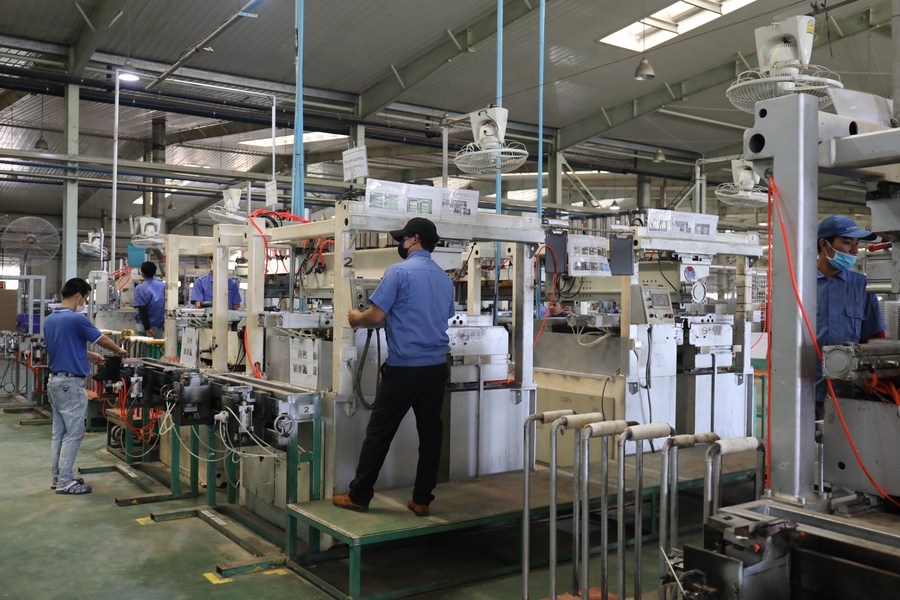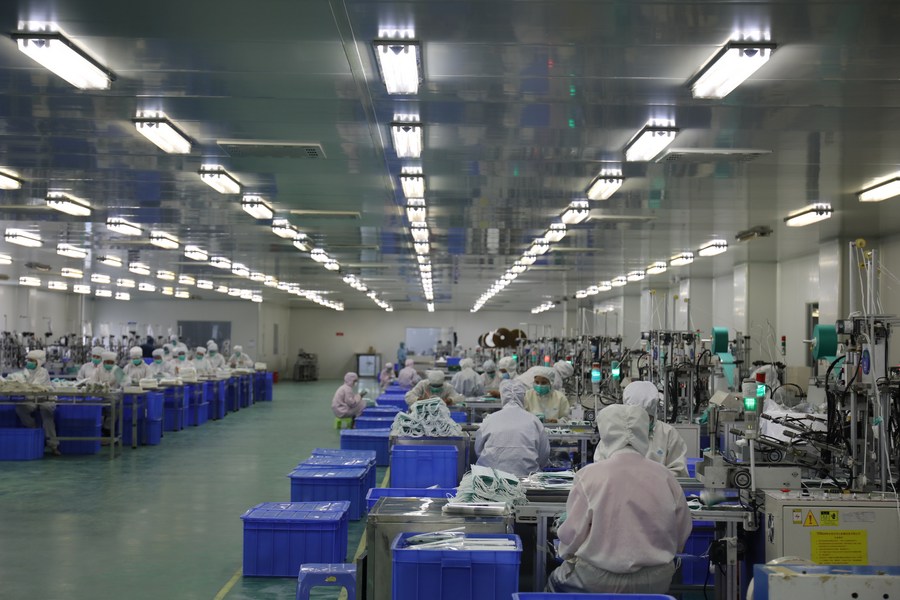Chinese-invested economic zone integrating Cambodia's Sihanoukville into regional, global supply chains: official

Photo taken on July 19, 2022 shows the entrance of the Sihanoukville Special Economic Zone (SSEZ) in Preah Sihanouk province, Cambodia. (SSEZ/Handout via Xinhua)
The Chinese-invested Sihanoukville Special Economic Zone (SSEZ) has played an important role in supporting Cambodia's economic development and is becoming a link of regional and global supply chains, a local official said.
PHNOM PENH, Nov. 8 (Xinhua) -- The Chinese-invested Sihanoukville Special Economic Zone (SSEZ) in Cambodia has been transforming the southwestern coastal province of Preah Sihanouk into a link in the regional and global supply chains, a local official said on Monday.
Long Dimanche, the province's deputy governor, said the SSEZ is the biggest industrial zone in terms of size in the Southeast Asian country.
"The SSEZ has played an important role in supporting Cambodia's economic development and has been becoming a link of regional and global supply chains," he told Xinhua.

People work at a factory in the Sihanoukville Special Economic Zone (SSEZ) in Preah Sihanouk province, Cambodia on July 19, 2022. (SSEZ/Handout via Xinhua)
The 11-square-km industrial zone currently houses approximately 170 factories from China, Europe, the United States, Southeast Asia and other regions with a total investment of more than 1.3 billion U.S. dollars, creating around 30,000 jobs, he said.
Those enterprises manufacture clothes, shoes, luggage and leather goods, machinery, construction materials, home furniture, auto parts and tires, and new photovoltaic materials, among others, he added.
"The SSEZ is a good example of mutually beneficial cooperation between Cambodia and China under the framework of the Belt and Road Initiative," he said. "It's also a symbol of Cambodia-China friendship."
Dimanche said the SSEZ had also given a big boost to Cambodia's export growth during the COVID-19 pandemic in the last two years.
"Thanks to high vaccination rates and strict anti-COVID-19 measures, the SSEZ had functioned as usual during the pandemic in 2020 and 2021, so the exports from the zone to international markets were still on the rise," he said.

People work at a factory in the Sihanoukville Special Economic Zone (SSEZ) in Preah Sihanouk province, Cambodia on July 19, 2022. (SSEZ/Handout via Xinhua)
Dimanche said the SSEZ has the potential to grow further for investors as it is adjacent to the Sihanoukville Autonomous Port, the sole international and commercial deep-sea port of Cambodia. It's very convenient for import-export activities.
"As the construction of the first-ever Phnom Penh-Sihanoukville Expressway has just been completed, it's easier for travel and goods transport between the capital Phnom Penh and Preah Sihanouk province," he said. "We hope more foreign enterprises will come to invest in the zone in the post-pandemic era, so it will increase our export volume and generate more jobs for our people."
The deputy governor said the SSEZ has provided a lot of benefits to Preah Sihanouk province, reducing migration and poverty, and also acted as a gateway for trade exchanges between Cambodia and the world.

Workers make face masks at a factory in the Sihanoukville Special Economic Zone (SSEZ) in Preah Sihanouk province, Cambodia on July 19, 2022.(SSEZ/Handout via Xinhua)
Speaking of the zone's corporate social responsibility (CSR), Dimanche said the zone operator has always prioritized environment protection and contributed to the development of local community in the fields of culture, education and health, among others.
According to the SSEZ's latest report, the value of imports and exports passing through the zone rose to 1.9 billion U.S. dollars in the first nine months of 2022, up 21 percent from a year earlier.
The economic zone is expected to accommodate a total of 300 factories in coming years, and that will create up to 100,000 jobs for the Cambodian people.
- Chinese, Cambodian martial artists make joint performance at famed Angkor
- China, Cambodia pledge to build community with shared future, promote multilateralism, economic globalization
- Building China-Cambodia community with shared future enters new era: Chinese FM
- China, Cambodia to move forward in building high-quality, high-level, high-standard community with shared future
- China will always be Cambodia's most trustworthy partner, strongest supporter: Wang Yi

